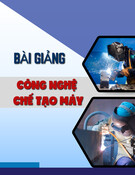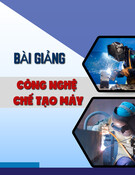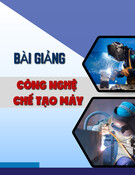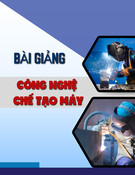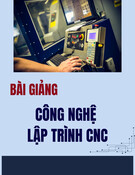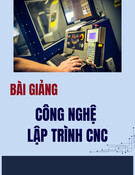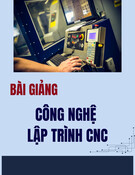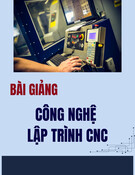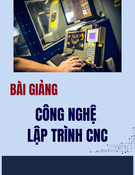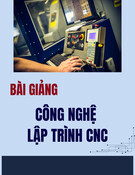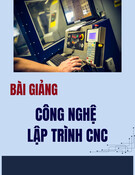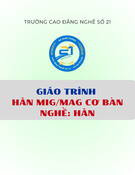Special Issue
JOURNAL OF SCIENCE AND TECHNOLOGY DONG NAI TECHNOLOGY UNIVERSITY
137
ADVANCEMENTS IN AUTOMOTIVE SIGNAL LIGHT DESIGN: A NOVEL APPROACH INCORPORATING LIGHT SHAPING DIFFUSER TECHNOLOGY
1Dong Nai Technology University 2Binh Thuan College, Phan Thiet City, Vietnam *Corresponding author: Pham Ngoc Dang Khoa, phamngocdangkhoa@dntu.edu.vn
Le Thanh Lanh1, Pham Ngoc Dang Khoa1*, Nguyen Khanh An2
GENERAL INFORMATION
Received date: 27/03/2024
Revised date: 13/05/2024
Accepted date: 11/07/2024
KEYWORD
Light Shaping Diffuser (LSD;
the
optimization
emphasizing
of
Automotive Signal Light;
Diffuser:
ABSTRACT Automotive signal lights play a crucial role in ensuring road safety and communication between drivers. This paper introduces a novel approach to automotive signal light design that leverages Light Shaping Diffuser (LSD) technology to improve light distribution uniformity, reduce glare, and enhance responsiveness during dynamic driving conditions. The study begins with an overview of the current challenges in automotive lighting and the rationale behind adopting LSD technology. Subsequently, the optics design process is detailed, optical configurations to achieve superior performance metrics. Simulation experiments, coupled with sensitivity analyses, demonstrate the robustness and versatility of the proposed design across varying operating conditions. Comparative evaluations against conventional LED-based signal lights the significant performance enhancements underscore offered by the proposed design. Result number experiments results further validate the efficacy of the design in real- world scenarios, paving the way for its potential adoption in future automotive platforms. Finally, a discussion on the implications of these findings and avenues for future research is provided, highlighting the transformative impact of advanced lighting technologies on automotive safety and efficiency.
1. INTRODUCTION
brighter, more energy efficient, and longer- lasting than previous options. Nonetheless despite such advancements challenges remain in optimizing both functionality and aesthetics of signal lights used on cars specifically tail lamps (TL) as well as stop lamps (SL) (L.-T. Le et al., 2018) Light-emitting diode (LED) technology has revolutionized the automotive industry in recent years; it offers superior performance and efficiency compared to traditional lighting systems. The automotive sector has adopted LEDs for their illumination solutions: these are
Special Issue
JOURNAL OF SCIENCE AND TECHNOLOGY DONG NAI TECHNOLOGY UNIVERSITY
(a)
138
Issues such as uneven light distribution, glare and limited design flexibility often afflict conventional LED-based signal lights. Not only do these shortcomings compromise the functionality and safety of vehicles but they also impede their overall aesthetic appeal. To address these challenges, we must adopt innovative approaches that enhance thus light uniformity; minimize glare offering superior design versatility (H.-T. Le et al., 2020).
in optical design
(b) Figure 1. LED-equipped vehicle signal lights: (a) The conventional signal light designs; (b) The new design Signal lights’ stop and tail lights use sets of three-dimensional Light Shaping Diffusers.
2. OPTICS DESIGN
that ingeniously
to
enhance
technology
technology-not
only
This section unveils the optics design strategy integrates Light Shaping Diffuser (LSD) technology into LED- based signal lights, specifically tail lamps (TL) and stop lamps (SL), enhancing their light distribution uniformity and reducing glare. This innovative approach not only improves performance but also unlocks a plethora of creative design possibilities a testament to how crucially influential automotive light aesthetics can be in shaping a vehicle’s visual appeal (Anwar et al., 2022).
LEDs, controlling
Light Shaping Diffuser (LSD) that is a technology used to manipulate and control the distribution and directionality of light. In automotive signal lights, LSD technology helps to achieve uniform light distribution, reduce glare, and enhance the overall performance of lighting systems. We propose a novel solution in this paper: integrating Light Shaping Diffuser the (LSD) performance of automotive signal lights (H.- T. Le et al., 2022; L. T. Le et al., 2022; Savant et al., 2002). Our aim leveraging LSD improves uniformity in light distribution and reduces glare, but also opens up innovative design possibilities for TL and SL applications. Through analysis; comprehensive experimental validatio we showcase the effectiveness of our approach: overcoming limitations inherent to conventional LED- based signal lights. This paves an exciting path towards enhanced safety, efficiency even aesthetics in automotive lighting. The conventional signal light designs; (b) new design signal lights’ stop and tail lights shown in Figure 1.
The selection and arrangement of LED light sources within the signal light housing initiates the optics design process: strategically positioning their distribution we optimize this illumination pattern. Our objective To achieve a uniform light output across not only TL but also SL’s entire surface (J. Lee et al., 2020; Simova & Kavehrad, 1996). The requiement of standard of the tail lamp’s that shown in Figure 2.
Special Issue
JOURNAL OF SCIENCE AND TECHNOLOGY DONG NAI TECHNOLOGY UNIVERSITY
139
conditions like and
(a) Tail Lamps (TL)
including dynamic operating scenarios signaling braking comprehensive tests assess their performance in real-world circumstances.
to
Figure 2. The requiement of intensity standard of the tail lamp’s.
a
Signal lights’ performance undergoes an assessment grounded on pivotal metrics: light output uniformity, reduction in glare, energy regulatory efficiency and adherence standards. We quantify the enhancements garnered from integrating LSD technology versus traditional LED based signal lights combination of quantitative through measurements and subjective evaluations; this is our process evaluation.
3. SIMULATION EXPERIMENTS
Our optics design innovates significantly by integrating Light Shaping Diffusers (LSDs) into the signal light assembly: these optical elements, specifically designed to control the directionality and distribution of light from advantage. We a key LEDs, provide meticulously select LSD geometry; consider material properties their placement crucial with this precision approach we shape emitted illumination towards specific requirements. These specifications include but aren’t limited lighting distribution or glare to uniform reduction--thus enhancing overall performance in various applications (X.-H. Lee et al., 2012; Mendoza et al., 1997).
This section provides a detailed account of the simulation experiments we undertook to appraise the performance and effectiveness of our proposed optics design, which integrates Light Shaping Diffuser (LSD) technology into automotive signal lights. Using comprehensive simulations, we evaluated this system’s light distribution characteristics, its ability to reduce glare, and overall efficiency under an array operating conditions
the behavior of
integrates
The simulation experiments utilize cutting- software, which edge optical modeling precisely mimics light propagation within the signal light assembly; this is our Optical Modeling Setup. The model itself intricate geometrical and optical attributes of LED light sources, LSDs along with other relevant components. We employ advanced optical simulation tools in Optical Simulation and Analysis to model the light propagation within our signal light assembly, validating the effectiveness of our optics design. Through rigorous simulation and analysis, we optimize LSDs’ design parameters; this achievement allows us not only to achieve desired light distribution characteristics but also minimize optical losses.
Once we finalize the optics design through simulation, we take a step forward into Prototype Fabrication and Testing. This phase involves incorporating LSD technology into light prototypes. Under various signal In the analysis of light distribution, we ensure uniform illumination across the entire surface of tail lamps (TL) and stop lamps (SL) by examining the pattern generated from a signal light system. We calculate this using one formula:
Special Issue
JOURNAL OF SCIENCE AND TECHNOLOGY DONG NAI TECHNOLOGY UNIVERSITY
140
signal (1)
for our system. Through light pinpointing critical design parameters, further enhancement becomes possible. Where:
I(x,y) represents the intensity of light at a given point (x, y) on the TL/SL surface.
Ii is the intensity of the ith LED source.
Ai denotes the emitting area of the ith
LED.
θi is the angle of emission of the ith LED.
ri is the distance between the ith LED and the point (x, y).
Finally, we pit the simulation results of our proposed optics design enhanced with LSD technology against those conventional LED- based signal lights. This analysis a critical component in graduate level research allows us not only to quantify improvements in light distribution uniformity, glare reduction and energy efficiency but also other relevant performance metrics, The result shown in Figure 3 and the experiment result shown in Figure 4.
(a)
D(x,y,xi,yi) is the spreading function of the LSD, which distributes the light emitted by each LED across the TL/SL surface.
users. We conduct
(b)
Assessing Glare Reduction: Integrating LSD technology primarily aims to minimize glare and enhance visual comfort for fellow road simulation experiments evaluating the optics design’s effectiveness in reducing glare, yet preserving sufficient luminance levels for visibility.
(c)
dynamic operational
Figure 3. (a) The inner sight of the new
optimized Tail lamp (TL2) and the commercial sample (TL) ; (b) The outlook of the Tail lamp of commercial sample (TL). (c) The outlook of the new optimized Tail lamp (TL2).
We employ Dynamic Scenarios Simulation to evaluate the performance of signal lights under conditions, including braking and signaling; this involves simulating an array of diverse scenarios using time-dependent light source models. Through such action, we analyze transient behavior within the signal light system a strategic move ensuring optimal performance during critical driving maneuvers. We evaluate the robustness of the optics design against variations in key input parameters: LED characteristics; LSD properties; and environmental factors a crucial step to optimize performance and reliability
Special Issue
JOURNAL OF SCIENCE AND TECHNOLOGY DONG NAI TECHNOLOGY UNIVERSITY
141
Figure 4. Utilizing the program test, compare the findings of the newly optimized stop lamp TL2 and the commercial sample TL using the Automotive test analyzer receiver data in accordance with EU ECE (Society of Automotive Engineers) requirements.
substantial a
4. RESULTS
demonstrate enhancement: (62.22/40.46, 10U-5L) percent higher for Tail lamps.
These findings underscore the proposed design illuminance efficiency. The
The experimental results validate the efficacy light the optimized automotive signal of design, incorporating micro-prism films to enhance light output patterns of the Tail lamps are depicted in Figure 3. Photometric testing results, presented in Figure 4 highlight the significant improvements achieved with the proposed design.
standards. Additionally,
the effectiveness of in enhancing illuminance efficiency and meeting regulatory the optimized structure demonstrates superior light intensity, particularly in the H-V direction, further enhancing visibility and safety for motorists and pedestrians alike.
5. DISCUSSION
Upon analysis of the results shown in Figure 3 and Figure 4, it is evident that the optimized Tail lamps (TL2) exhibit markedly higher illuminance efficiency compared to their commercial counterparts. The computed illuminance efficiency ratios of averaged in the Several key points emerge discussion of our experimental results, illuminating the significance and implications of our findings.
Special Issue
JOURNAL OF SCIENCE AND TECHNOLOGY DONG NAI TECHNOLOGY UNIVERSITY
142
light reduction challenges glare
challenges longstanding
research for
technology
advance vehicle distribution crucial uniformity, and responsiveness; thereby providing palpable advantages in safety, comfort and energy efficiency. These compelling results lay a solid efforts future foundation specifically those directed towards integrating advanced lighting technologies into upcoming vehicle platforms and underscore our ultimate aim: enhancing driving experiences with heightened security and enjoyment. The proposed optics design: it offers substantial improvements in light distribution uniformity and glare reduction potentially addressing in automotive lighting. This design enhances safety and comfort for drivers and other road users by minimizing hotspots, dark spots, as well as glare. Thus, the integration of Light into (LSD) Shaping Diffuser automotive signal lights presents a promising approach lighting to performance. 6. CONCLUSION
noteworthy lighting
traffic flow
This study’s presented optics design progressions in showcases automotive technology. It excels notably in three key areas: achieving uniform light distribution, diminishing glare and maintaining responsiveness under dynamic driving conditions. By employing a mix of Light Shaping Diffuser (LSD) technology with optimized optical setups; the design delivers palpable advantages enhanced safety and comfort for drivers while promoting energy efficiency not only for them but also other road users. The dynamic behavior analysis further illuminates the optics design’s responsiveness and reliability during braking and signaling maneuvers: its rapid light modulation, coupled with seamless transitions between lighting states, guarantees a lucid communication of driver intentions. This clarity is paramount to accident prevention it fosters an environment where remains unimpededly smooth. Consequently; this facet underscores not just theoretical effectiveness but also practical usefulness in real-world driving scenarios.
diverse across in terms of
Moreover, the sensitivity analyses unveil a robust optics design: it remains steadfast against variations in crucial parameters LED characteristics and environmental factors. This revelation implies not only suitability for deployment operating conditions but also amplifies its versatility and reliability within varied environments.
illustrate. Its
technologies offers potential automotive existing
Simulation experiments and sensitivity analyses reveal the design’s robustness and versatility across diverse operating conditions, thus emphasizing its potential for widespread automotive signal light adoption. Comparative evaluations against conventional LED based signal lights further reinforce: the proposed light design outperforms distribution uniformity; glare reduction a dash of excellence that enhances safety and energy efficiency a crucial factor in today’s eco- conscious world. The study’s findings mark a substantial stride in the pursuit of augmenting automotive lighting performance and safety. The proposed optics design by tackling pivotal challenges and harnessing state of the art optical for transforming future vehicle platform’s lighting systems. The proposed optics design offers performance advantages over conventional lights, as comparative LED based signal evaluations light superior distribution uniformity, glare reduction and energy efficiency underscore its potential to surpass lighting technologies. It can revolutionize automotive lighting technology. The design confronts
Special Issue
JOURNAL OF SCIENCE AND TECHNOLOGY DONG NAI TECHNOLOGY UNIVERSITY
143
REFERENCES
Le, L.-T., Le, H.-T., Lee, J., Ma, H.-Y., & Lee, H.-Y. (2018). Design of a Society of Automotive Engineers Regular Curved Retroreflector for Enhancing Optical Efficiency and Working Area. Crystals, 8(12), 450. https://doi.org/10.3390/cryst8120450
Anwar, A. R., Sajjad, M. T., Johar, M. A., Hernández‐Gutiérrez, C. A., Usman, M., & Łepkowski, S. P. (2022). Recent Progress in Micro‐LED‐Based Display Technologies. Laser & Photonics Reviews, 2100427. 16(6), https://doi.org/10.1002/lpor.202100427
Street
10(2),
Le, H.-T., Le, L.-T., Liao, H.-Y., Chen, M.-J., Ma, H.-Y., & Lee, H.-Y. (2020). Design of Low-Glared LED Rear Light of Automotive for EU ECE Regulation by Use of Optimized Micro-Prisms Array. 63. Crystals, https://doi.org/10.3390/cryst10020063
Lee, J., Le, L.-T., Le, H.-T., Liao, H.-Y., Huang, G.-Z., Ma, H.-Y., Wen, C.-C., Fang, Y. C., Chen, C.-H., Chang, S.-H., (2020). Low-Glare & Lee, H.-Y. Freeform-Surfaced Light Luminaire Optimization to Meet Enhanced Road Lighting Standards. International Journal of Optics, 2020, 1– 12. https://doi.org/10.1155/2020/5683264
and
uniformity 265,
Le, H.-T., Le, L.-T., Nguyen, X.-H., Le, T.-N., & Lee, H.-Y. (2022). Study of EU ECE Light Shaping Diffuser with high for efficiency automotives. Optik, 169487. https://doi.org/10.1016/j.ijleo.2022.1694 87 Lee, X.-H., Tsai, J.-L., Ma, S.-H., & Sun, C.- C. (2012). Surface-structured diffuser by iterative down-size molding with glass sintering technology. Optics Express, 6135. 20(6), https://doi.org/10.1364/OE.20.006135
Mendoza, E. A., Mintzer, D. T., Low, P. W., & Menon, A. (1997). Novel material used for light-shaping diffusers (B. S. Dunn, J. D. Mackenzie, E. J. A. Pope, H. K. Schmidt, & M. Yamane, Eds.; pp. 114–117). https://doi.org/10.1117/12.284114
223–241).
Le, L. T., Le, H. T., Trinh, X. T., Hoang, Q. T., & Le, N. T. (2022). Study of Automotive Reflex Reflector by Corner Cube’s Round Angle for Enhancing Optical Performance to Meet US SAE Standard. In B. T. Long, H. S. Kim, K. Ishizaki, N. D. Toan, I. A. Parinov, & Y.-H. Kim (Eds.), Proceedings of the International Conference on Advanced Mechanical Engineering, Automation, and Sustainable Development 2021 (AMAS2021) (pp. 285–289). Springer International Publishing. https://doi.org/10.1007/978-3-030- 99666-6_43 Savant, G., Jannson, T., & Jannson, J. (2002). Diffuser Display Screen. In J. Ludman, H. J. Caulfield, & J. Riccobono (Eds.), Holography for the New Millennium (pp. Springer-Verlag. https://doi.org/10.1007/0-387-21693- 6_11
Special Issue
JOURNAL OF SCIENCE AND TECHNOLOGY DONG NAI TECHNOLOGY UNIVERSITY
144
via Boyce, P. (2024). Lighting for Driving: Roads, Vehicles, Signs, and Signals: Roads, Vehicles, Signs, and Signals. CRC Press.
Lee, pp.
Simova, E. S., & Kavehrad, M. (1996). Light- shaping diffusers for indoor wireless infrared a communications holographic approach (I. Cindrich & S. 284–291). Eds.; H. https://doi.org/10.1117/12.239632
Indian J
Mandal, S., Bhumika, K., Kumar, M., Hak, J., Vishvakarma, P., & Sharma, U. K. (2024). A Novel Approach on Micro Sponges Drug Delivery System: Method of Preparations, Application, and its Future Prospective. of Pharmaceutical Education and Research, 58(1), 45-63.
Garciamendez-Mijares, C. E., Aguilar, F. J., Hernandez, P., Kuang, X., Gonzalez, M., Ortiz, V., ... & Zhang, Y. S. (2024). Design considerations for digital light processing bioprinters. Applied Physics Reviews, 11(3).
Oxidative
Rohilla, R., Grag, H., Mishra, V., & Kumar, V. (2024). Design and implementation of a lightweight hybrid optical system for aircraft head-up display. International Journal on Interactive Design and Manufacturing (IJIDeM), 1-12.
Wagle, S. R., Kovacevic, B., Foster, T., Ionescu, C. M., Jones, M., Mikov, M., ... & Al-Salami, H. (2024). Probucol-bile acid nanoparticles: A Novel Approach to Prevent and Promising Solution Cellular in Stress Sensorineural Hearing Loss. Journal of Drug Targeting, (just-accepted), 1-35.


![Gậy Dẫn Đường Thông Minh Cho Người Khiếm Thị: [Ưu điểm/Tính năng/Kinh nghiệm chọn mua]](https://cdn.tailieu.vn/images/document/thumbnail/2025/20250422/gaupanda088/135x160/6991745286495.jpg)


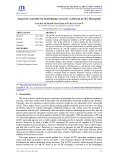
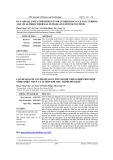
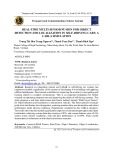
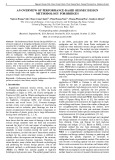
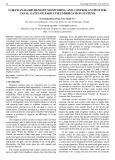

![Bài tập tối ưu trong gia công cắt gọt [kèm lời giải chi tiết]](https://cdn.tailieu.vn/images/document/thumbnail/2025/20251129/dinhd8055/135x160/26351764558606.jpg)
